#Survivor tree
Explore tagged Tumblr posts
Text

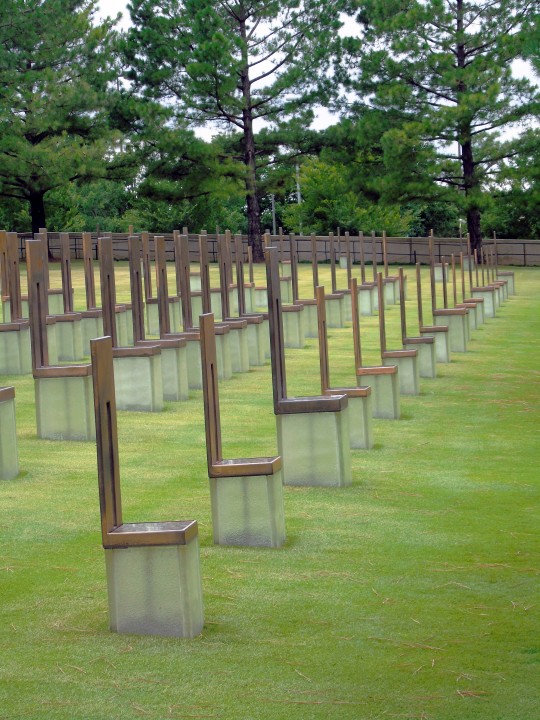
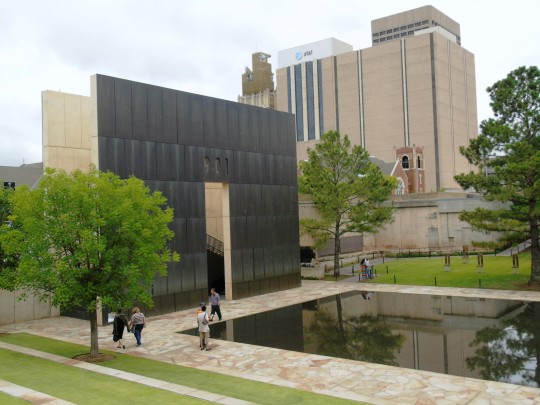
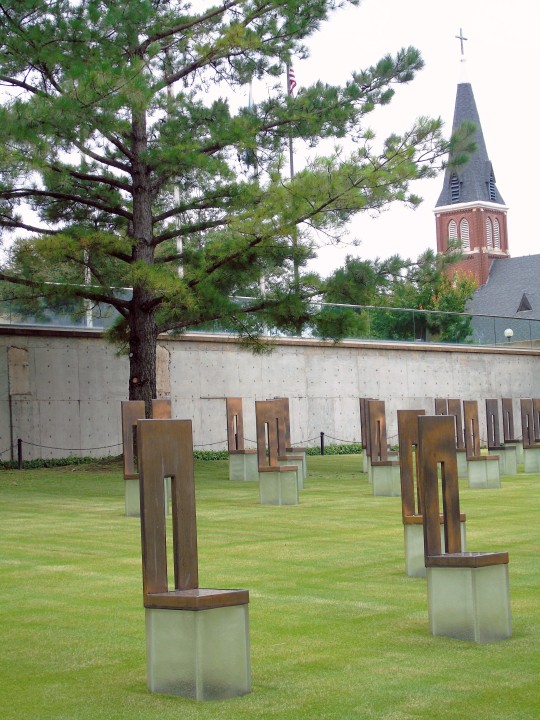




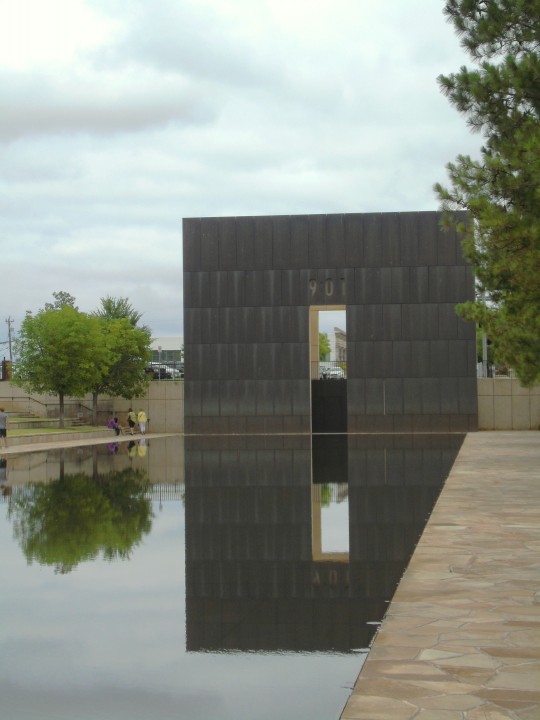
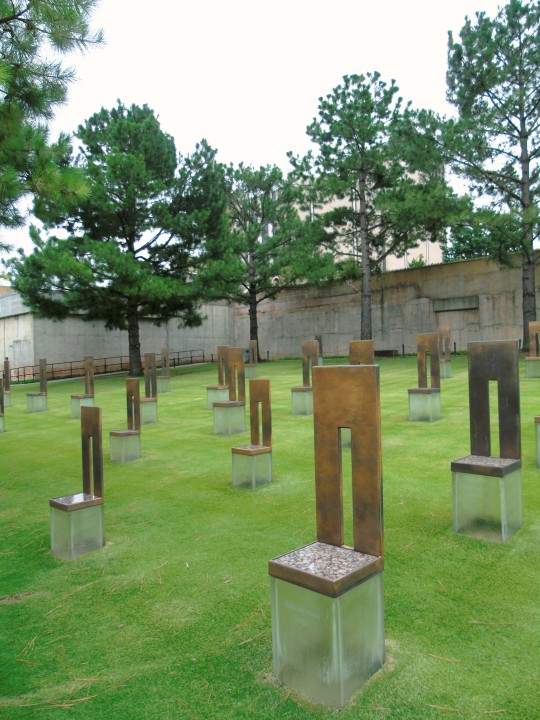
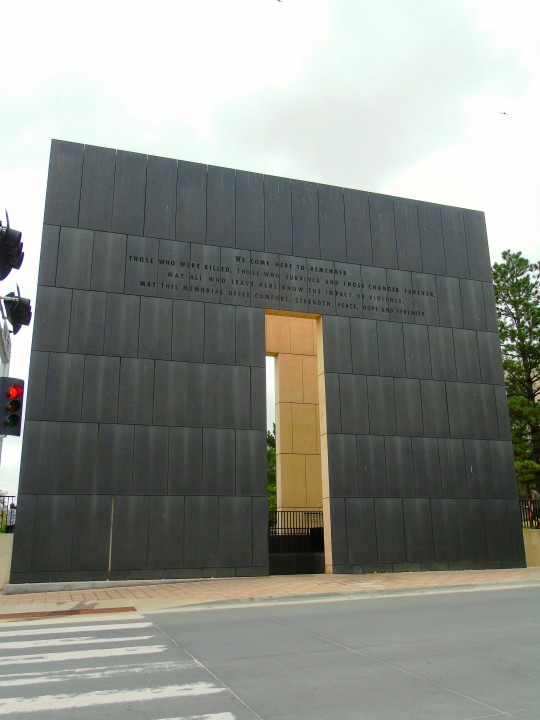
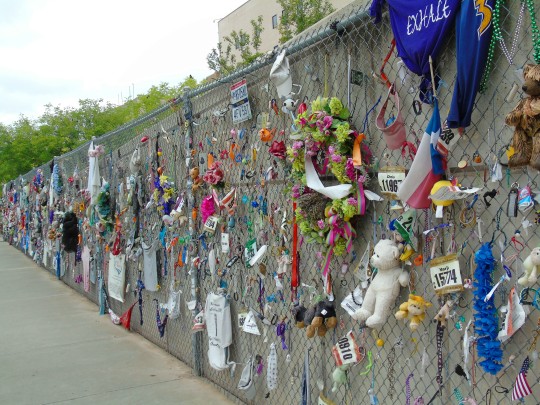
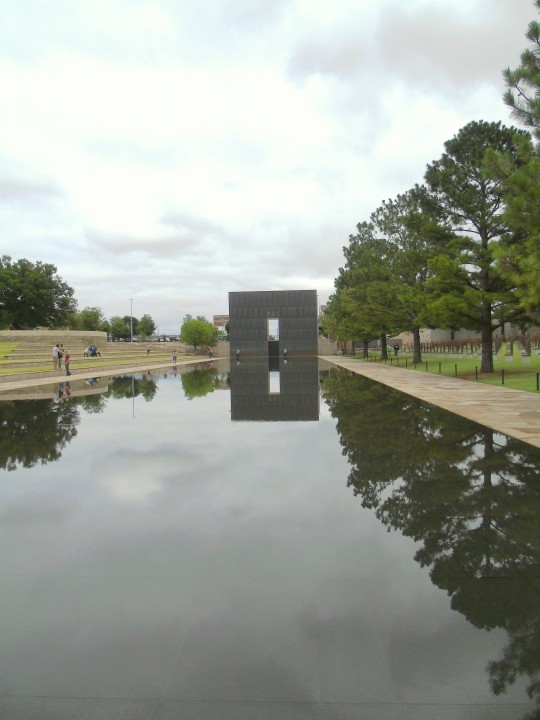



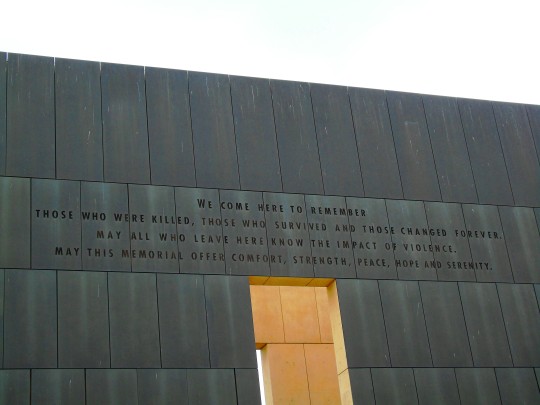
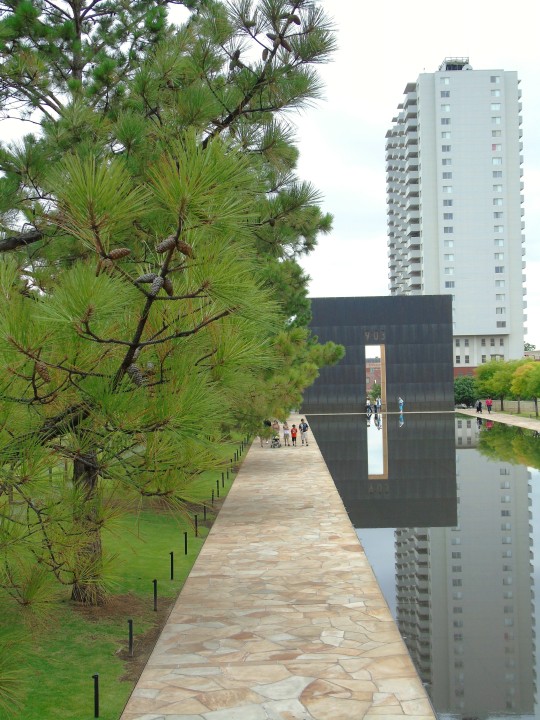
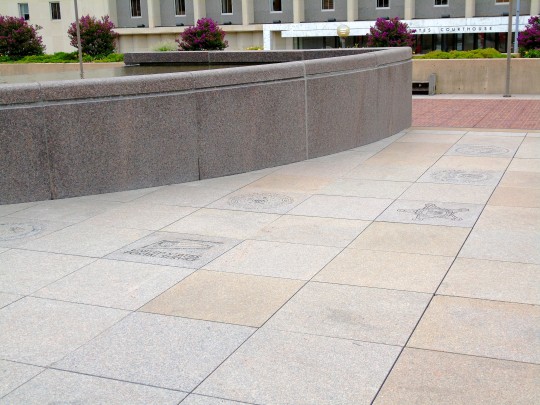
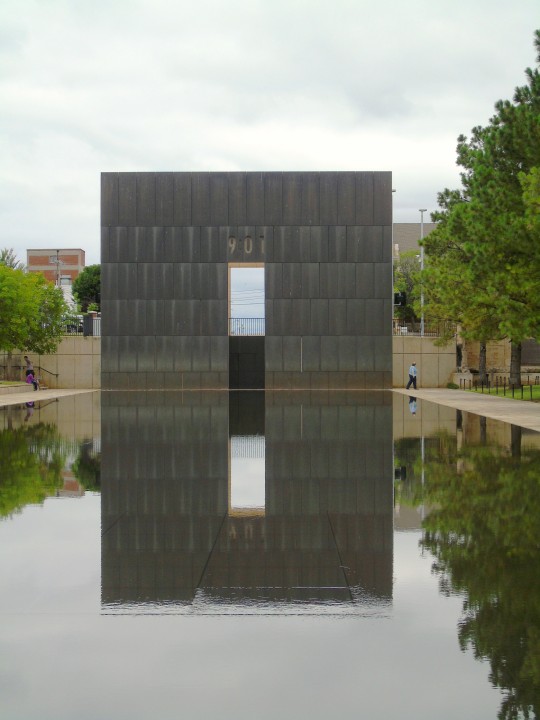
National Oklahoma City Bombing Commemoration Day
National Oklahoma City Bombing Commemoration Day is celebrated on April 19 annually. This day aims at honoring the deceased, injured, and volunteers when the devastating event occurred. Two anti-government extremists — Timothy McVeigh and Terry Nichols perpetrated the terrorist attack. They did this with white supremacists and right-wing terrorist sympathies. The bombing happened at 9:02 a.m. at the Alfred P. Murrah Federal Building in Oklahoma City, Oklahoma, and killed at least 168 people, injured more than 680 others, and destroyed more than one-third of the building.
History of National Oklahoma City Bombing Commemoration Day
Timothy McVeigh, an ex-Army soldier and security guard, parked a rented Ryder truck in front of the Alfred P. Murrah Federal Building in downtown Oklahoma City on April 19, 1995. He decided to commit mass murder there. The bomb was a powerful one. It consisted of a deadly cocktail of agricultural fertilizer, diesel fuel, and other chemicals. McVeigh got out of the rented car with the bomb inside, locked the door, and headed towards his getaway car. He ignited one timed fuse, then another. At 9:02 a.m., the bomb exploded.
A third of the building had been reduced to rubble in just a few seconds, with many floors flattened. The surrounding area looked devastated. More than 300 nearby buildings were damaged or destroyed; dozens of cars were incinerated. The consequences to human beings were still more devastating: 168 souls were lost, including 19 children, with several hundred more injured.
It was the worst act of terrorism in United States history. The F.B.I. quickly arrived at the scene to support rescue efforts and investigate the facts. There were clues in the area they found. On April 20, thanks to the rear axle of the Ryder truck, the vehicle identification number was traced to a body shop in Junction City, Kansas. Employees helped the F.B.I. quickly compose a composite drawing of the man who had rented the van. F.B.I. agents started to show the sketch around town, and local hotel employees supplied a name: Tim McVeigh.
National Oklahoma City Bombing Commemoration Day timeline
1995The Bombing Occurs
On April 19, 1995, the Alfred P. Murrah Federal Building in downtown Oklahoma City is destroyed by a terrorist attack.
1997Terrorists are Tried
The bombers are tried and convicted.
2001McVeigh is Executed
McVeigh is sentenced to death, and executed by lethal injection.
2003Alfred P. Murrah Federal Building is Replaced
The Alfred P. Murrah Federal Building is replaced with a 185,000-square-foot building.
National Oklahoma City Bombing Commemoration Day FAQs
What components' symbols are used in the Oklahoma City Memorial?
There are nine rows, each representing a floor of the federal building where the field is now located. Each chair has the name of someone killed, and smaller chairs stand for the children.
How old was Timothy McVeigh when he was executed?
He was 33 years old.
Why is it difficult for the United Nations to draft a definition of terrorism?
Mainly because the characteristics of terrorism are hard to define. Many member countries harbor terrorists.
How to Observe National Oklahoma City Bombing Commemoration Day
168 seconds of silence
Information
Post on social media
168 people died in the bombings. The nation joins 168 seconds of silence to honor those people.
Learn about terrorist attacks and bombings. Learn how Oklahoma City recovered from this devastating event.
Write a post on social media to raise awareness about this commemoration day. Do not forget to use the hashtag #OklahomaCityBombingCommemorationDay.
5 Terrorist Attacks In History
AMIA bombing
U.S. Embassy Bombings
September 11 attacks
Christmas massacres
7/7 bombings
It occurred in 1994 in Buenos Aires, Argentina.
It occurred in 1998 in Kenya and Tanzania.
It occurred in 2001 in New York, United States.
It occurred in 2008 in the Democratic Republic of Congo.
These occurred in London, killing 56.
Why National Oklahoma City Bombing Commemoration Day is Important
It is a day to remember
It is a day to raise awareness
It is an opportunity to address threats of violence
This day is perfect for remembering those who died not only in the Oklahoma Bombing but also in any other terrorist attacks. Many people die in this type of attack.
This day is also helpful in raising awareness about the problem of terrorism. Security issues affect almost all countries.
Awareness is crucial to disrupting terrorist plots to avoid future attacks. Governments should be committed to holding accountable those who perpetrate such attacks.
Source
#National Oklahoma City Bombing Commemoration Day#19 April 1995#USA#Oklahoma City#Oklahoma#anniversary#US history#white terrorism#travel#summer 2014#South Central Region#original photography#tourist attraction#landmark#reflecting pool#cityscape#Oklahoma City National Memorial#OklahomaCityBombingCommemorationDay#Field of Empty Chairs#Survivor Tree#Gate of Time#Survivors' Wall#architecture#vacation
6 notes
·
View notes
Text
2023: Upward Bound Trip - 9/11 Memorial Reflecting Pools
This is the second spread dedicated to the 9/11 Memorial in New York City, highlighting the public and outdoor elements that are free for all to experience. The 9/11 Memorial is a profoundly moving tribute, centered around two massive reflecting pools set within the footprints of the original Twin Towers. These pools feature cascading waterfalls and are surrounded by bronze plaques inscribed…
#9/11#Cricut#design#ideas#MASCrapping#masculine scrapbooking#memorial#Museum#Navy#plaques#reflecting pools#sailors#ScrapBook#scrapbooks for men#survivor tree#the sphere
0 notes
Text
The Big "Is RAMCOA Antisemitic?" Debunk Post
Because I have to stay relevant, here we go
Let's start with a little speech. A bit of positivity.
You know, there is something good to said about this RAMCOA antisemitism discourse. The majority don't seem to be falling for it at all, and many are becoming more educated about the panic, RAMCOA/OEA and its history (the good and the bad) than ever before
RAMCOA/OEA a very real issue that deserves awareness and advocacy, and so far, I've noticed a massive surge in members of the community researching the ISSTD and the OEA sig's work.
It has brought antisemitism into light in a way that hasn't really been talked about on a large scale in system communities, and most don't know ever existed. Many, genuinely, had no idea that the satanic panic was antisemitic in these ways, and it's putting a lot of pieces together and adding a lot of context that'll help us grow and be better people going forward.
It's been really nice seeing such a positive shift to open, educational conversations, with people genuinely wanting to know the truth and unlearn harmful associations.
SAS stands with RAMCOA and OEA survivors.
So let's get into it.
SRA and The Memory Wars, lasting results
SRA started with Michelle Remembers, a book, in 1980. It resulted in thousands of unsubstantiated claims of abuse, daycare hysteria, set CDD research and OEA abuse back decades, affected millions, and to this day conjures images of cloaked figures sacrificing children.
The ISSTD was formed in 1984, amid the panic, with the goal of quickly developing an effective treatment and documenting the disorder as thoroughly as possible. Many mistakes were made. Clinicians aren't immune to societal panics, and lessons were learned the hard way.
I think an important distinction that many have forgotten is that the ISSTD's principal controversy isn't SRA. SRA didn't start or end with the ISSTD.
While the “Satanic Panic” played out in courts and in mass media, the ISSTD entered “The Memory Wars”, and it's this that they're most controversial for. False, implanted, and fostered memories weren't solely related to SRA. It was used to discredit all types of abuse and violence and is still used to this day to silence victims.
By the 1990s, therapists were being sued, licenses were being revoked, and members were fleeing the ISSTD. The False Memory Syndrome Foundation wouldn't be created for another couple of years, but that doesn't mean its founding members weren't already wreaking havoc.
The FMSF would be created in 1992, and their bigger and better attacks on therapists were brutal and persistent. The legal battles would be especially effective at causing therapists to refuse to work with victims of abuse.
Research on ritual abuse, CDDs, and repressed memories came to a grinding halt.
The Satanic Panic eventually fell into relative silence by 1995, but false memories lived on, loud and cruel.
The FMSF would eventually begin to write college textbooks for the next generation of clinicians. It would survive until 2019.
The ISSTD is still trying to regain its membership. It's only recently that they reached 1500, the highest since 1993.
Antisemitism, blood libel, and the satanic panic
If you're confused about how everything is related, I'm going to make it very simple so you grasp the basic idea.
This is not a history lesson.
Blood Libel, or ritual murder, is the idea that Jewish people sacrificed Christian children in religious rituals. Cloaked figures performing rituals and killing children and animals. The same thing you picture when you think of Satanists and rituals.
For those who recognize the connection (racists), this fuels their sentiments and creates a language for them to speak to each other.
It is true, a basic fact, that for many people, Satanists are anyone who doesn't worship the Christian god. Including and especially Jewish people.
SRA and RAMCOA
Depending on who you ask, the connection is either that:
MYTH: the ISSTD originally called their RAMCOA sig (Special Interest Group) the SRA sig. FACT: The RAMCOA sig, one of twelve ISSTD sigs, was created in 2008. There was never any kind of satanic ritual abuse group or association within the ISSTD.
FACT: Ritual abuse, the RA in RAMCOA, still has ties to SRA and brings to mind everything from the panic. ALSO FACT: That's why the ISSTD has renamed it to the OEA sig.
Hopefully we're all on the same page now.
Who's Grey Faction?
Grey Faction is a group of the TST (The Satanic Temple) and is closely related to the FMSF. While the FMSF generally attacked all types of abuse, GF, being related to Satanism, is focused on recovered memories and the (still alive) satanic panic. They believe that all reports of false memories supports satanic panic conspiracy theories. They continue the FMSF's work.
How did we get here?
Well, TST and GF are on reddit. Syscringe is on reddit. And now syscringe is here.
This is what syscringe bot says every time RAMCOA is brought up.


That link goes to Grey Faction.
So is RAMCOA Antisemitic?
Kind of yeah. It was a really good move of the ISSTD to change the name to OEA sig. They talk about the association on their website and stated they wanted to get away from that. No one won the satanic panic. Ritual abuse is real, but its history is tainted.
The discourse around RAMCOA isn't about helping Jewish people. At least, not for the people pushing the false connection that the ISSTD started and continues to maintain the panic to this day.
It's about discrediting the ISSTD and the trauma theory. It's about silencing victims, even Jewish survivors.
It's about ignoring that the ISSTD is making moves in the right direction.
It's about continuing the idea that false memories exist and that trauma memories can't be trusted or taken at face value. It's about downplaying the depravity of abusers and the lengths they'll go to.
I want to finish this post with a letter from a very dear friend. It's not a mod on this blog, simply someone wishing to stay anonymous.
Uplift Jewish Voices
Hello, I’m Noam, an ethnic and religious Jew. I face antisemitism on the daily and deal with having DID. I am not a RAMCOA survivor, but I have a number of friends who are. Today I’m here to talk about the recent discourse going around regarding whether claiming to have RAMCOA experiences is inherently antisemitic. TLDR: no.
Let’s start with understanding why people think this. The term ritual abuse originated from the term satanic ritual abuse and is often associated with the satanic panic. The satanic panic in the 80s and 90s was extreme and yes, did involve a lot of antisemitic conspiracy theories. People would suggest certain symbols or music or groups of people (often vague, or calling it a nationwide conspiracy) were “brainwashing” these “good Christian children” into satanic practices or straying from rigid Christianity. Jews are often stereotyped as Satanic, controlling things, and murdering and cannibalizing children/babies.
Ritual abuse nowadays is often still associated with Satanic cults, but it has a much broader and less accusatory definition in medical/therapeutic spaces. Per Schröder et al. (2018), “ritual abuse occurs when a religious, political, or spiritual authority uses its position of power and the sovereignty to interpret the respective belief system to manipulate and dominate its followers.” Some examples include repeated forced creation of CSEM, religious and other types of cults (yes, including satanic, but also Christian and other religions), and being forced to abuse others (Schröder et al., 2018). Trafficking is also a type of organized abuse. We know these types of abuses happen. But given the history of RA as a term and the harm claims of SRA caused, how does one determine whether something is a conspiracy theory or actual trauma someone experienced?
This page by the European Commission does a good job of talking about identifying conspiracy theories and the harm they do. I won’t recount the whole thing, but here are some basic things they state conspiracy theories have in common: a secret plot, a group of conspirators, unfounded/unreliable evidence, suggesting everything is connected, dividing the world into good people and bad people, and scapegoating certain groups (“Identifying Conspiracy Theories,” 2020).
What makes (many) stories of RAMCOA different from antisemitic conspiracy theories? I’m glad you asked!
• The secret plot in conspiracy theories often involves a large group of people in on some secret changing something about the world or identifying a secret thing that must have happened to lead to unfortunate current events. RAMCOA tends to stem from people or organizations working on a much smaller scale, and the things they are doing mostly affect the person/people experiencing this abuse. Abusers may try to instill in victims a sense that they control a lot about the world and the events that happen within it, but they don’t.
• A big question I like to ask people who spout conspiracy theories is “who is they (the group of conspirators)?” If they is some generic big bad, the government, “elites” (see the AJC’s Translate Hate Glossary section titled “cosmopolitan elite”), or vague and unknown, it’s usually a dogwhistle for Jews. The person themselves may not realize this, but perhaps they never looked further into the evidence behind these accusations and who those being accused are. RAMCOA perpetrators are not vague to their victims. They often have familial ties or other close relationships with them that allow the abusers to gain their victims’ trust (Schröder et al. 2018). The things they do to abuse people and the methods they use are not vague or mysterious actions to achieve an end. There are specific actions and tactics that cults and authority figures use for RAMCOA.
• Whether evidence is unfounded is a harder thing to distinguish, since many survivors of RAMCOA cope using dissociation or have an amount of dissociative amnesia around traumatic events (Shröder 2018). The Europe Commission suggests three main things to check for in regards to evidence about a claim. Who is the author and why are they writing this? Is the source reliable/reputable? Is the tone and style “balanced and fair or sensationalist and one-dimensional?” (“Identifying Conspiracy Theories,” 2020). I also like to think about, especially with regards to abuse survivors, if this is a conspiracy theory, why are they telling me the things they’re telling me? Most RAMCOA survivors I’ve met avoid talking about their trauma and are more focused on figuring out if what they experienced is real and how to heal from it. They are not trying to convince me of something; they are just sharing their story and looking for support.
• RAMCOA victims I’ve talked to, particularly those with DID, also have a more complex view of their abusers or are trying to come to terms with all the bad things someone they admired, trusted, and/or loved did. Conspiracy theorists tend to separate people into conspirators or innocents. There is no middle ground. Healing for a lot of abuse victims involves realizing that good people can do bad things and bad people can do good things; the world is not black and white.
• Scapegoating often involves generalizing and demonizing certain people or groups of people. I find a lack of seeing these “others” as human or wanting anything other than a single, unified goal. It also tends to involve assumptions much more than any personal experience. Anyone with even the slightest connection to a certain ideology is evil. RAMCOA often involves many victims, many of whom understand that other people involved with the organization that hurt them are also victims or have been scared or brainwashed into further perpetuating abuse.
• Also, while satanic panic was largely about going against Christianity, many religious cults are associated with particular sects or communities within Christianity, and they use certain ideologies within the group to deter people from leaving or reporting abuse. Perpetrators claim some sort of punishment or betrayal will be involved in these actions.
Anyways, I want to put emphasis on healing in RAMCOA survivors, where many of the points and purposes of conspiracy theories are antithetical to such a process. People should be allowed to find support, community, and reliable resources about what they have gone through (if it is physically/mentally safe for them to do so). Please do not insist that these traumas aren’t real on the basis of antisemitism from the satanic panic. The survivors I’ve met who talk about parts of their trauma are working hard to come to terms with it themselves and how to cope, and while they may be angry and upset towards their abusers, they do not try to insist to me how evil a group is and that there is a need to take direct action against them. They are just trying to survive.
Now, ritual abuse as a term and the history of its use is something I think needs more discussion. I would love to see more research about how the term evolved within medical/therapeutic spaces and how much of a connection the current definition and use has to antisemitism. But regardless of what we end up calling these types of abuses, there are real examples of them and people who have empirical evidence that they have been through such experiences.
Furthermore, I have a problem with a lot of the claims of antisemitism in relation to RAMCOA coming from goyim (AKA non-Jews). You are not the authority on antisemitism. You do not get to claim to defend us while not speaking to us about the topic. There is so much antisemitism going around, but I find so few people willing to listen to Jews when we talk about the struggles we face. (The SAS mods are an example of exceptions to this. I appreciate the amount I’ve been able to talk to them and how open and supportive they are. I love y’all.) Encouraging hate and disbelief is not helpful to us. What’s helpful is doing your research and learning about how to recognize and combat antisemitism. Take your energy where it’s needed, thank you.
European Commission. (2020, August 12). Identifying conspiracy theories. European Commission. <https://commission.europa.eu/strategy-and-policy/coronavirus-response/fighting-disinformation/identifying-conspiracy-theories_en>
Gerke, J., Fegert, J., Rassenhofer, M., & Fegert, J. M. (2024). Organized sexualized and ritual violence: Results from two representative German samples. Child Abuse & Neglect, 152, 106792. https://doi.org/10.1016/j.chiabu.2024.106792
#tw#ramcoa#cdd history#debunk#syscringe and Grey faction sitting in a tree K-I-S-S-I-N-G#not syscourse#pro syscourse conversation#sas stands with ramcoa and OEA survivors#I'm fucking exhausted goddamn
184 notes
·
View notes
Text

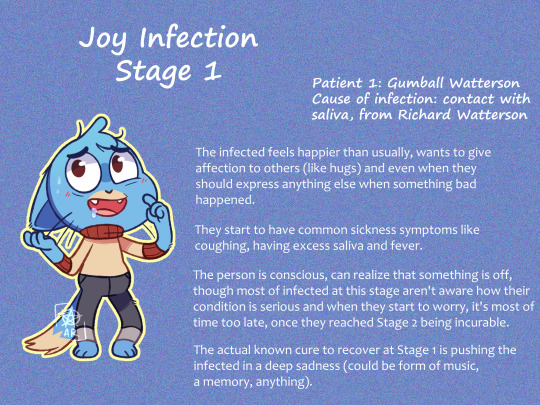
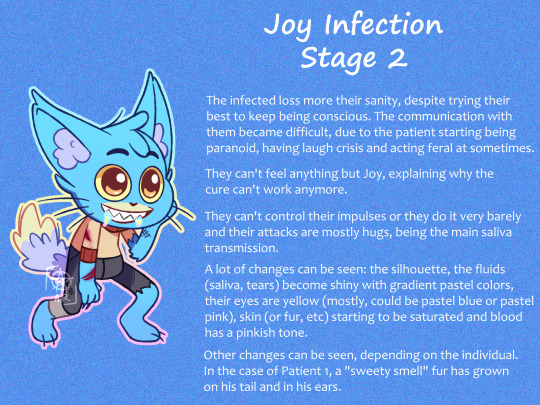

Sooooo, i started an Infection AU except it's based on the Joy episode from Gumball
They're changing to cute and "friendly" monsters mixed with candy gore :'D
Small sheets of some characters btw !!
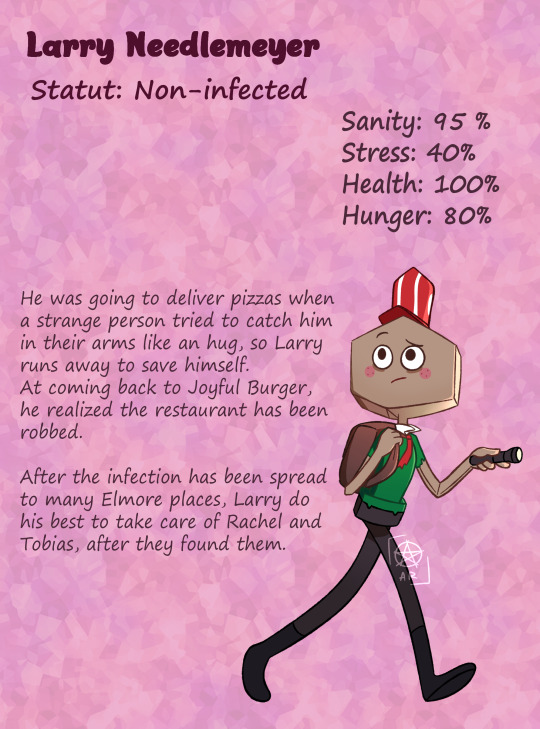
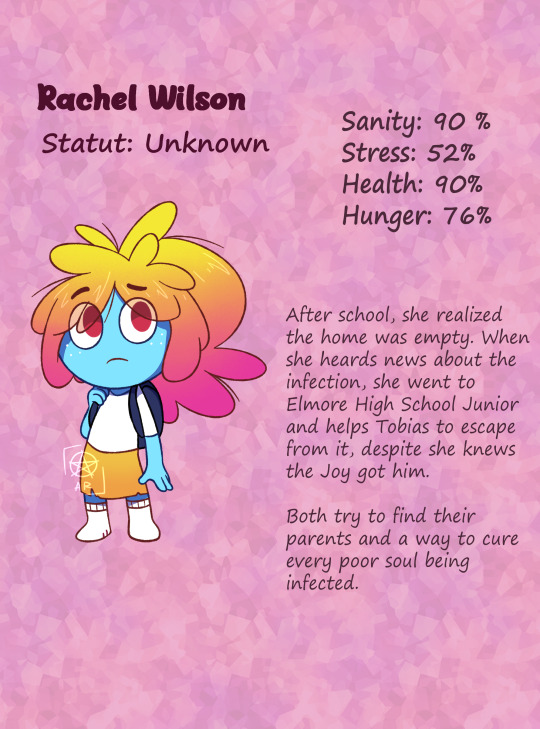
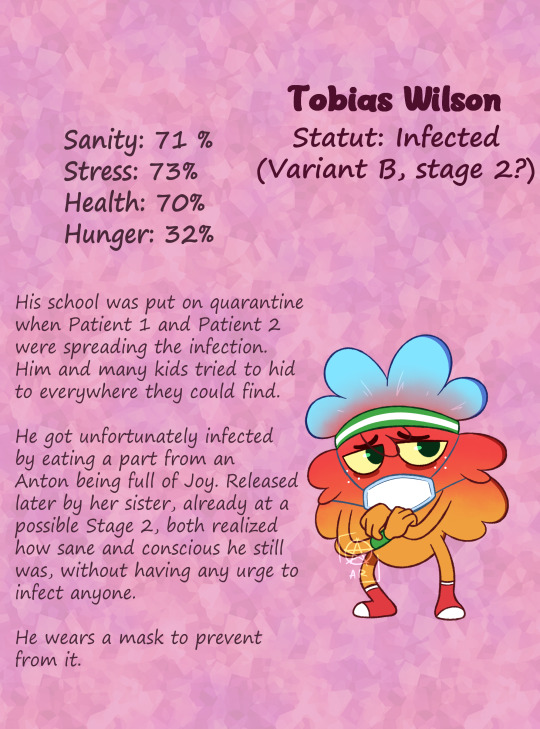
#tawog#the amazing world of gumball#gumball watterson#rachel wilson#tobias wilson#larry needlemeyer#I actually really like how Gumball looks-#he just wants affection :(#candygore#tagging it anyway#tw blood#joy infection au#my take on this isn't really horrific but survivors has still to avoid the infected so still zombie like despite they aren't dead lol#i'll try to add more infos about this but idk how much i'll do from this au since i'm working more on steam tales#blooming tree
270 notes
·
View notes
Note
You made the unexpected turn into Trolls and i decided it looked interested and followed you! Still haven’t actually watched anything, just kinda immersed myself in the fandom.
the trolls world is just ripe for nonsensical world building, amvs (we callin them fancams now? i'm not sure), and lore mechanics... and then shockingly, trauma dives.
like! because of the kind of media it's in, there are some horrific and tragic implications that are only glanced at, simply left untethered. there's not enough time to cover 2 decades of trauma in an hour thirty minutes for little timmy. But I Have The Time. I will sit with those implications.
and then!!
they get to have their cake and eat it too because of that very same media.
of course they're going to be dancing and singing with the people who only seconds ago tried to eat them! that's just what you do!
of course they're going to tell the people torturing them to death that they deserve to be treated with kindness! everybody does!
the picture it paints for me is of these like. incredibly anxious little trolls, with a whole culture around an almost toxic kind of positivity with very big troubles, and even bigger hearts. and that's like. joey kryptonite. they almost got me back in the first film, but i was mostly satisfied with the character arcs. so i didn't feel the need to break out the fandom playdough.
and then the third one came in with a steel chair like 'hey what if branch was just one part of an entire tragic family. what if they ALL had decades of trauma because of a bad decision they made as teenagers, which permanently skewed the trajectory of their lives. what if they needed some space to define themselves outside of their Band Titles (and by proxy their role in the family) and were then punished for that decision by the narrative, denying them the chance to reunite again. what if a promise sat forcefully broken for just as long and yet the bond didn't disintegrate. what if the love was still there.'
and i never stood a chance

#joey babbles#anon#trying to get back into the groove of being unhinged about fandom things on main#even if there isn't always art attached#sighs.#like yeah that the heck#did not expect these kind of intense emotions from the glitter fart series#JD experiencing the horror of the troll tree being empty#bruce having to grapple with the idea of putting down roots somewhere else. just hoping that this time - they're not yanked out of the dirt#clay and viva trying help a group of frightened survivors prepare a space/method to trap and kill their pursuers. liKE YIKES#floyd with [REDACTED]#branch wearing the vest for all three movies. OH my god....#dreamworks trolls
108 notes
·
View notes
Text

#Winter Walkway#Path Through Snow#Resilient Trees#Winter Survivors#Snowy Serenity#Peaceful Winter Days#Snow Covered#Winter Aesthetic#Nature's Stillness#MissedMileMarkers
62 notes
·
View notes
Text

A Lonely Tree
This magnificent tree, a survivor, a beacon of resilience, has seen it all. But one can't help but wonder... is it lonely? Perhaps it's reminiscing about its former companions, or maybe it's just indifferent to the watery expanse surrounding it. Whatever the reason, this solitary sentinel commands respect and awe. It's a reminder that even in isolation, one can thrive.
https://whatyoulookingatnow.blogspot.com/2025/01/a-lonely-tree.html
#isolation#thriving#lonely#tree#trees#nature quotes#nature#landscape#landscape photography#survivor#resilient#toya's tales#toyastales#toyas tales#art#winter#january#life quote motivation#life quote of the day#life quote tumblr#life qoute#life quotes#beautiful quote#life quote#quoteoftheday#quotes
34 notes
·
View notes
Text



been thinking about this with the whole 2020 revival trend
#sawtism#apple doesnt fall too far from the autistic tree ig#danganronpa survivor#2020 veteran#saw#saw 2004#no because they even have the same COLOR SCHEME.
39 notes
·
View notes
Text






Shitpost Submission Saturday: Andor Survivor - Heroes vs Villains for @andorshitdaily's one-year blog anniversary Loosely based on the Andor Survivor Simulator made by @ireallyamabear
#andoredit#swedit#starwarsedit#starwarsblr#swshows#swsource#andor#cassian andor#vel sartha#mon mothma#*mine#this is for such a niche audience but omg#it was so much fun to make!#worth it#the one with taramyn k i l l s me#it's kinda like why banthas can't run up trees ya know#also it's kinda survivor - complain to vel edition xD
78 notes
·
View notes
Text





Sort of manga for the 20th year anniversary of the magazine belonging to the team behind Otaku festival, soon to be published. One of the oldest trees, in the Romanian capital city, almost burned down around 4 years ago, leaving behind a hollow inside. Ever since the incident, a piece of metal is strapped to its side, turning it into an occasional refuge for the homeless. This is the roughly translated version, the printed one is in Romanian.

The alt manga is about the spirit of a world living on the outskirts, almost forgotten by the hijacked revolution's aftermath. To look forward, this homeless grandfather keeps in mind the words of Lena Constante as well as the old-survivor-tree's lessons of life.
☯︎ This December marks 35 years since the Revolution of 1989, back when Ceaușescu's dictatorship ended. Nationalism, coupled with nostalgia for the by-gone Communist era, alongside homophobe outbursts and pro-extreme right Legionari fanatics have bombarded our everyday scrollable realities and, according to some, almost lead to a second Mineriad. Meanwhile, the presidential elections've been rescheduled for spring 2025.
♗♤🃟Gonna end this post and the year with a reminder to support causes such as the Innitiative Group defending the I.O.R. Park and independent journalists such as the guys at Snoop, tracing the tangled web behind our chaotic Romanian political life.
#trees#tree#old trees#survivor series#ecology#ecosystem#bucharest#botanical garden#natural history#ancestry#comix#comics#romania#grandparents#black and white#biodiversity#biodiversidad#comicstrip#indigineous people#revolution#december 1989#escher#raster#dambovita#by the river#alt manga#shōjo manga#shojo manga#shoujo
34 notes
·
View notes
Text
jedi survivor is so fucking good. except when it crashes. or when i try the force tear challenges (hatred is not the jedi way but whoever crafted the smuggler's tunnels force tear makes a damn good argument for the dark side). i'm playing on jedi master difficulty rn and having an ABSOLUTE blast.
#liveblogging#liveblogging jedi survivor#me when faced with a boss battle: LETS FUCKING GOOOOO#me when faced with 3+ enemies of mid to high difficulty at the same time: FEAR.PNG#i finally started putting points into the confusion tree and fellas. it's game changing#it took me 26 hours to do it but i finally started using it LMAOO#listen. it just feels WRONG to mind trick people in combat.#something something the necessity of war 😔😔
66 notes
·
View notes
Photo
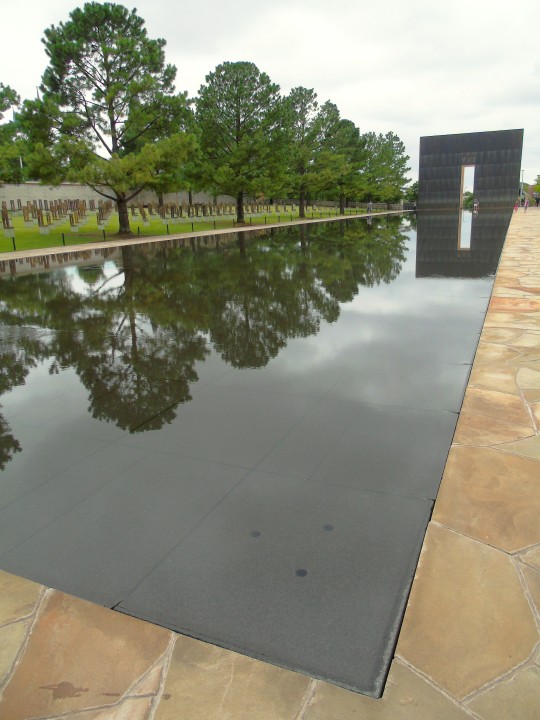
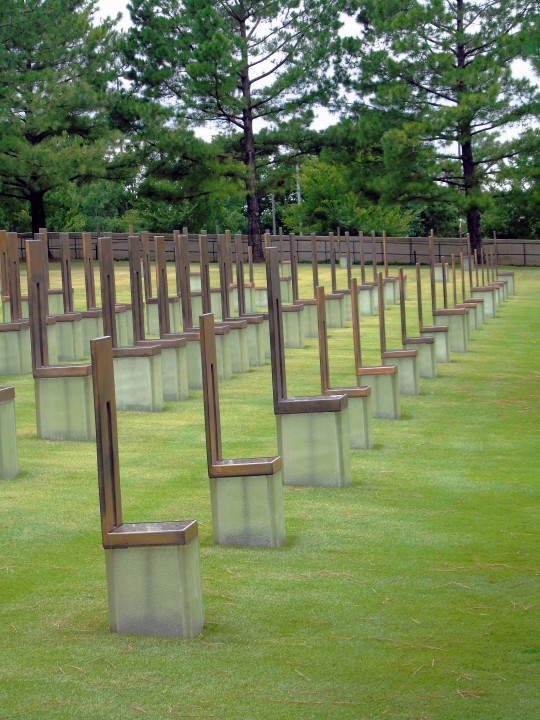
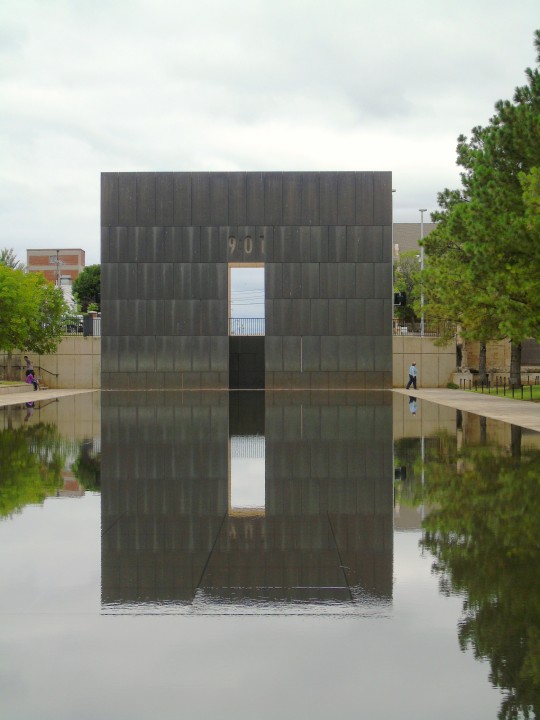
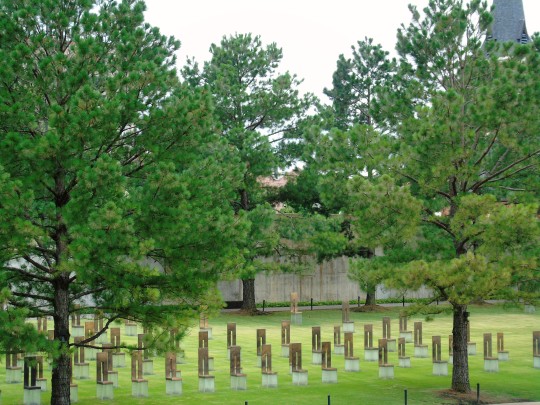


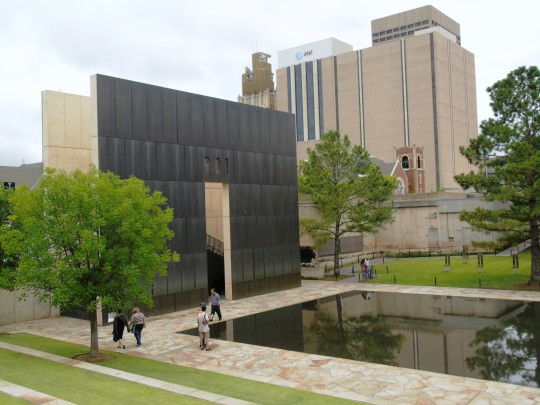
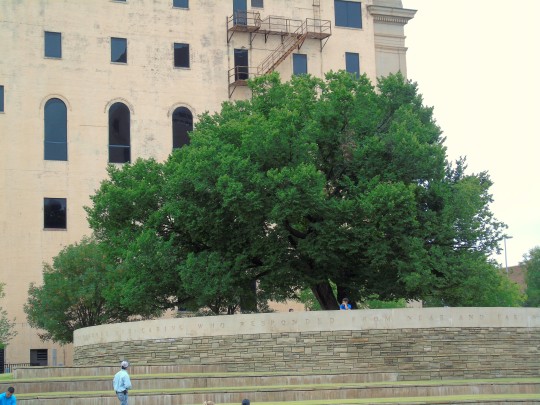
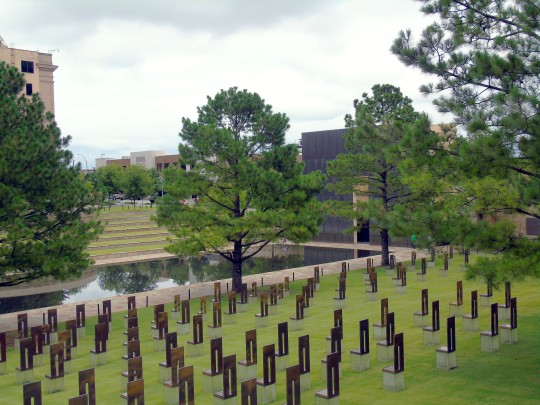
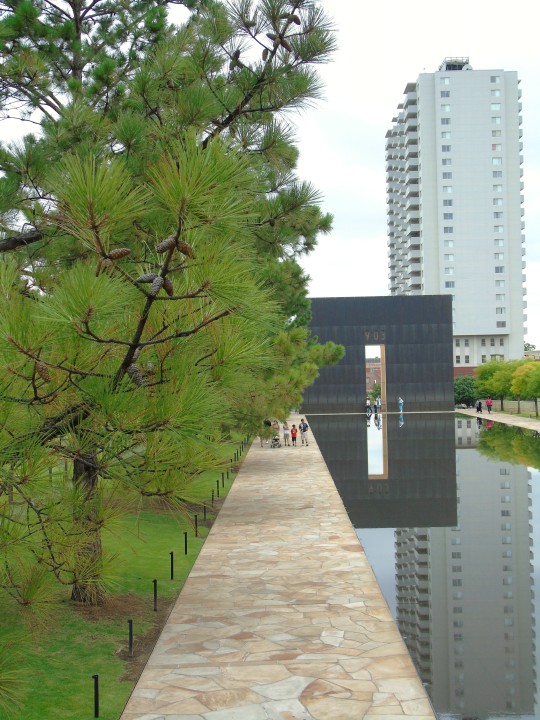
National Oklahoma City Bombing Commemoration Day
National Oklahoma City Bombing Commemoration Day is celebrated on April 19 annually. This day aims at honoring the deceased, injured, and volunteers when the devastating event occurred. Two anti-government extremists — Timothy McVeigh and Terry Nichols perpetrated the terrorist attack. They did this with white supremacists and right-wing terrorist sympathies. The bombing happened at 9:02 a.m. at the Alfred P. Murrah Federal Building in Oklahoma City, Oklahoma, and killed at least 168 people, injured more than 680 others, and destroyed more than one-third of the building.
History of National Oklahoma City Bombing Commemoration Day
Timothy McVeigh, an ex-Army soldier and security guard, parked a rented Ryder truck in front of the Alfred P. Murrah Federal Building in downtown Oklahoma City on April 19, 1995. He decided to commit mass murder there. The bomb was a powerful one. It consisted of a deadly cocktail of agricultural fertilizer, diesel fuel, and other chemicals. McVeigh got out of the rented car with the bomb inside, locked the door, and headed towards his getaway car. He ignited one timed fuse, then another. At 9:02 a.m., the bomb exploded.
A third of the building had been reduced to rubble in just a few seconds, with many floors flattened. The surrounding area looked devastated. More than 300 nearby buildings were damaged or destroyed; dozens of cars were incinerated. The consequences to human beings were still more devastating: 168 souls were lost, including 19 children, with several hundred more injured.
It was the worst act of terrorism in United States history. The F.B.I. quickly arrived at the scene to support rescue efforts and investigate the facts. There were clues in the area they found. On April 20, thanks to the rear axle of the Ryder truck, the vehicle identification number was traced to a body shop in Junction City, Kansas. Employees helped the F.B.I. quickly compose a composite drawing of the man who had rented the van. F.B.I. agents started to show the sketch around town, and local hotel employees supplied a name: Tim McVeigh.
National Oklahoma City Bombing Commemoration Day timeline
1995The Bombing Occurs
On April 19, 1995, the Alfred P. Murrah Federal Building in downtown Oklahoma City is destroyed by a terrorist attack.
1997Terrorists are Tried
The bombers are tried and convicted.
2001McVeigh is Executed
McVeigh is sentenced to death, and executed by lethal injection.
2003Alfred P. Murrah Federal Building is Replaced
The Alfred P. Murrah Federal Building is replaced with a 185,000-square-foot building.
National Oklahoma City Bombing Commemoration Day FAQs
What components' symbols are used in the Oklahoma City Memorial?
There are nine rows, each representing a floor of the federal building where the field is now located. Each chair has the name of someone killed, and smaller chairs stand for the children.
How old was Timothy McVeigh when he was executed?
He was 33 years old.
Why is it difficult for the United Nations to draft a definition of terrorism?
Mainly because the characteristics of terrorism are hard to define. Many member countries harbor terrorists.
How to Observe National Oklahoma City Bombing Commemoration Day
168 seconds of silence
Information
Post on social media
168 people died in the bombings. The nation joins 168 seconds of silence to honor those people.
Learn about terrorist attacks and bombings. Learn how Oklahoma City recovered from this devastating event.
Write a post on social media to raise awareness about this commemoration day. Do not forget to use the hashtag #OklahomaCityBombingCommemorationDay.
5 Terrorist Attacks In History
AMIA bombing
U.S. Embassy Bombings
September 11 attacks
Christmas massacres
7/7 bombings
It occurred in 1994 in Buenos Aires, Argentina.
It occurred in 1998 in Kenya and Tanzania.
It occurred in 2001 in New York, United States.
It occurred in 2008 in the Democratic Republic of Congo.
These occurred in London, killing 56.
Why National Oklahoma City Bombing Commemoration Day is Important
It is a day to remember
It is a day to raise awareness
It is an opportunity to address threats of violence
This day is perfect for remembering those who died not only in the Oklahoma Bombing but also in any other terrorist attacks. Many people die in this type of attack.
This day is also helpful in raising awareness about the problem of terrorism. Security issues affect almost all countries.
Awareness is crucial to disrupting terrorist plots to avoid future attacks. Governments should be committed to holding accountable those who perpetrate such attacks.
Source
#National Oklahoma City Bombing Commemoration Day#19 April 1995#USA#Oklahoma City#Oklahoma#anniversary#US history#white terrorism#travel#summer 2014#South Central Region#original photography#tourist attraction#landmark#reflecting pool#cityscape#Oklahoma City National Memorial#OklahomaCityBombingCommemorationDay#Field of Empty Chairs#Survivor Tree#Gate of Time#Survivors' Wall#architecture
1 note
·
View note
Text
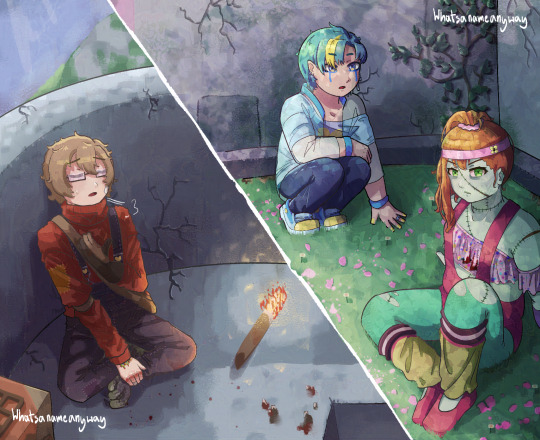
i forgot how to art so have a late thing
#zombie apocalypse survivors woo#secret life#zombie cleo#smajor1995#grian#scott smajor#i havent drawn something i liek the end result of in ages can i get fixed please#this was going well! i liked the characters enough! even despite that pathetic half-assed attempt at through-trees lighting on scott&cleo#working on the background just ruined it for me#dont get me wrong. i dont dislike this. its just so painfully mid#i used to be GOOD at drawing#what a time#my art#sigh. can you please be nice to me about this piece itd be nice
146 notes
·
View notes
Text

Survived the great tree falling of '09 with nothing more than a couple scratches and a vendetta against the family cat
#art#doodle#drawing#ratatheart#rat at heart#ornaments#christmas#holidays#tree falling#survivors#scratch#vendetta#family cat
16 notes
·
View notes
Text

Redid my happy tree friends l4d2 survivors. Changed Rochelle to a skunk, I think she looks nicer now <:•)
Uhh, I’ll do the l4d1 survivors eventually, once I have designs-
#happy tree friends#htf#left 4 dead 2#left 4 dead#l4d#l4d2#tw blood#blood tw#if u are reading this. pls let me know what animals you think the l4d1 survivors would be I need ideas
69 notes
·
View notes
Text

Art's been slow, have some mercenary dads~
#fallout#fallout 4#fo4#kevin#maccready#rj maccready#robert joseph maccready#male sole survivor#listen when your boyfriend is as tall as a tree you might as well put him to good use lmao#Kevin's dad was 6'0 btw lol
36 notes
·
View notes